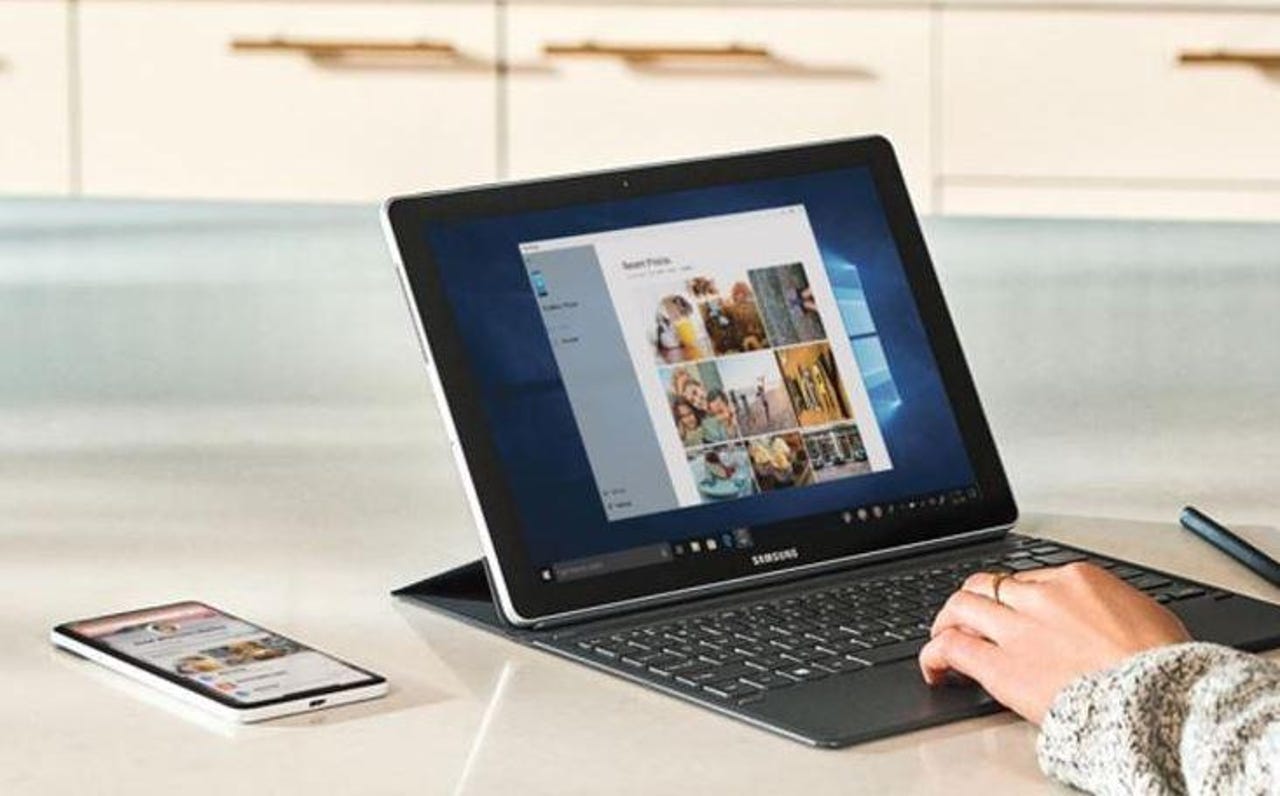Microsoft starts testing Android app-mirroring on Windows 10


Windows 10
At the October 2018 Surface launch event in New York City, Microsoft officials showed a glimpse of a coming feature of Windows 10: Android app-mirroring. That feature would allow Windows 10 users to see and interact with applications already installed on their Android phones directly on their Windows 10 PCs. It now seems Microsoft is set to begin to test that feature externally.
Also: What makes Microsoft tick?
Update (March 12): Microsoft is starting to roll out the Android app-mirroring feature to Insider testers on 19H1 builds via the Your Phone app, officials announced today. Users need Windows 10 PCs running Windows 10 19H1 test build 18335 or higher, and any Android phone running Android version 7.0 or newer. So far, this feature looks to be limited to the Surface Go, but Microsoft will expand the list of PCs and phones supported over time. This is a very early preview of this feature, officials said. Microsoft announced this feature simultaneously with releasing Windows 10 19H1 test Build 18356 to the Fast Ring today. (That build includes a number of fixes and no new features.)
Late last week, MSpoweruser.com reported that Twitter user "Ajith" had discovered the Android app-mirroring capability was close to its debut. Ajith showed the description of the feature, which stated "Bring your phone's screen to the Your Phone app and control all your apps from your PC. You can use your mouse and keyboard to help you interact." He also showed a screen shot of a phone notification app which would allow Windows 10 users with the Your Phone app to get notifications from their phones in an app rather than the Action Center.
MSPoweruser reports that the Android app-mirroring feature initially will be available on certain Android phones running Android 7.0 or greater, specifically the Samsung Galaxy S8, S8+, S9 and S9+. Supported Windows 10 PCs need to have the "Bluetooth radio supports Low Energy Peripheral Role" on their systems in order to get the app-mirroring feature to work. Users will need to have Microsoft's Your Phone app installed for the feature to work.
Only Windows Insiders running the latest test builds on certain devices will be able to test app-mirroring at first.The app-mirroring feature potentially could be available to Insiders as soon as this week.
Android phone users already can see the last couple dozen photos taken with their phones on their Windows 10 PCs with the Windows 10 October update installed via the Your Phone app. They can edit, share and save these photos right from their Windows 10 PCs when using Your Phone. Android phone users also can see and respond to SMS messages directly from their Windows 10 PCs running the October 2018 Update.
Must read
- This is not your father's Microsoft (CNET)
- Microsoft's obsession with Windows is ending (CNET)
- 10 apps to add features to Windows 10 (TechRepublic)
- How to set up a Windows 10 computer (TechRepublic)
Android app-mirroring support on Windows 10 may lead some to recall Microsoft's rather brief foray into allowing developers to bring Android applications to Windows 10 using the cancelled "Astoria" bridge technology. Microsoft dropped Astoria in 2016, claiming that it wasn't necessary, given the company also was offering an iOS-porting technology (and most Android apps also had iOS complements). Microsoft's iOS bridge is basically dead and not being actively updated or used by almost any (or possibly any) developers.
In Memoriam: All the consumer products Microsoft has killed off
Previous and related coverage:
Windows 7: What is your company's exit strategy?
If your business is still running on Windows 7, it's time to get serious about how you're going to handle the January 14, 2020 end of support. Here are your four options.
Windows 10 version 1903: Act fast to delay this big upgrade
Each time Microsoft rolls out a major upgrade to Windows 10, you have the option to wait a few months before you install it on PCs running Windows 10 Pro or Enterprise. But you have to act quickly.
Windows 10: New study shows Home edition users are baffled by updates
How annoying are Windows 10's automatic updates? In a new study, a group of UK researchers report that users of Home edition experience unexpected restarts and inconsistent installation times, caused by inappropriate defaults and inadequate notice of pending updates.